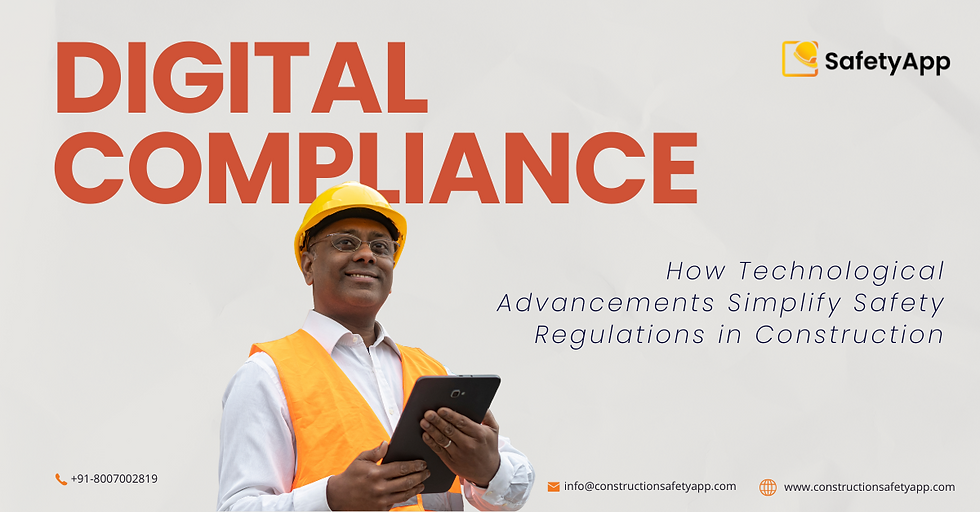Construction Safety in Earthquake Zones: Lessons from the Myanmar-Thailand Quake
- Harshali Deshmukh
- Apr 3
- 2 min read

On March 24, 2025, a powerful 7.7 magnitude earthquake struck eastern Myanmar near the border with Thailand, sending tremors through cities like Chiang Rai, Chiang Mai, and even reaching Bangkok. The quake caused serious structural damage in parts of Myanmar, with aftershocks and disruptions felt across the north regions of India as well .
While natural disasters like earthquakes cannot be prevented, their impact—especially on construction sites—can be mitigated with proactive planning and robust safety protocols. The recent event is a stark reminder of why earthquake readiness must be part of every construction safety strategy, especially in seismically active areas.
Why Construction Sites Are High-Risk During Earthquakes
Construction sites are particularly vulnerable during seismic activity because:
Structures are often partially built, lacking full stability.
Workers may be operating at heights or with heavy machinery, increasing risk of injury during sudden tremors.
Scaffolding, cranes, and temporary supports can collapse or fail under seismic pressure.
Materials and tools can become hazardous debris.
In regions like northern Thailand and eastern Myanmar, which lie along the Sagaing Fault, such risks are not theoretical—they're real, recurring, and dangerous.
Construction Safety Measures in Earthquake-Prone Areas
To protect workers, equipment, and structures, construction teams should implement the following measures:
1. Structural Safety from Day One
Design and build with seismic-resistant techniques.
Ensure foundation and framework are secured early in the build phase.
2. Emergency Preparedness
Develop and train crews on an earthquake response plan.
Conduct regular evacuation drills.
Clearly mark and communicate safe zones on-site.
3. Use of Technology
Apps like SafetyApp can be used to:
Report structural issues immediately
Track worker attendance in real time
Monitor safety checklists and compliance
Send instant alerts in case of emergencies
4. Equipment and Material Safety
Secure scaffolding, formwork, and temporary structures daily.
Store materials in low-risk areas, and stabilize heavy equipment when not in use.
Final Thoughts
The recent 7.7 magnitude earthquake along the Myanmar-Thailand border serves as a critical wake-up call for the construction industry—not just in Southeast Asia, but worldwide. Seismic events can occur with little to no warning, and when they do, the consequences for unprepared construction sites can be catastrophic. Lives, livelihoods, and millions in infrastructure investment are at risk.
Integrating earthquake safety protocols into both the planning and execution phases of a project is no longer optional—it’s a necessity. This includes adopting structurally sound practices, conducting regular safety drills, and leveraging digital tools like SafetyApp for real-time risk management, reporting, and emergency alerts.
A safer construction environment is possible—when we combine awareness, preparedness, and technology.


